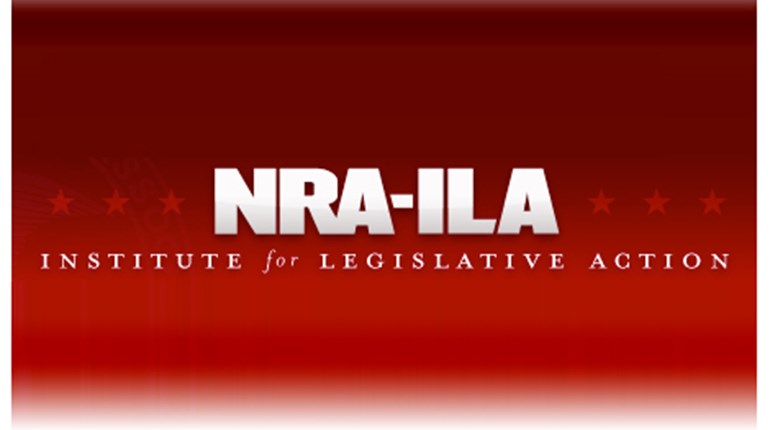
Harlan B. Carter was the first director of the NRA’s Institute for Legislative Action (ILA) before being promoted to executive vice president.
NRA’s Institute for Legislative Action (ILA) was created in 1975, then saved and strengthened by NRA members in the 1977 Annual Meeting, in the “Revolt at Cincinnati.” According to the gun-prohibition lobby, the NRA had been an apolitical organization that suddenly grew “radical” in the 1970s. Actually, the developments in the 1970s fortified NRA’s longstanding tradition of active defense of the right to keep and bear arms.
Founded in 1871, the NRA promoted rifle marksmanship training and competition. At the time, there were hardly any gun-control laws, and so the membership saw little need for the association to be involved in political affairs. In the early 20th century, as anti-gun activists grew more aggressive, the NRA came to the defense of all law-abiding firearms owners.

NRA’s first involvement in federal government affairs came in 1903. Then, Congress and President Theodore Roosevelt (an NRA member), acted on what the NRA had been saying since 1871: Strong national defense depends on citizen soldiers who become proficient riflemen long before they volunteer for the armed forces. Congress established the National Board for the Promotion of Rifle Practice (NBPRP) to oversee national matches in riflery. The 21-member national board included, by statute, all eight directors of the NRA.
The NRA worked together with NBPRP to fight proposed laws that might harm or deter the armed citizenry. The NRA emerged as a major political force in the first decades of the 20th century in this way. The NRA member magazines were (and still are) the association’s tool for informing members about pending legislation that might affect them for better or worse, so that members could contact their elected officials. In 1934, the NRA created its Legislative Affairs Division in response to anti-gun legislation being pushed by U.S. Attorney General Homer Cummings (D-Ill.). Cummings wanted a $200 tax and federal registration on machine guns, which he defined to include any semi-automatic holding more than 12 rounds. His proposed National Firearms Act (NFA) also included national registration and a $5 tax for all handguns, not just semi-automatics.
In the House Ways and Means Committee, NRA President Karl Frederick testified that the restrictions on handguns and semi-automatics were unacceptable. So were proposed licensing fees on handgun dealers and manufacturers. Frederick patiently explained to the representatives the difference between an automatic and a semi-automatic, using a Colt 1911 semi-automatic pistol as an example.
Also testifying against the bill was NRA’s executive vice-president, Gen. Milton A. Reckord. In his testimony, he also represented the Adjutants General Association (the heads of all the state National Guards), of which he had formerly been president.
Assistant Attorney General Joseph B. Keenan threatened that if the NRA continued to fight the handgun restrictions, the Franklin Roosevelt administration would nationalize the firearms industry and would then refuse to sell any firearms to citizens. Keenan also offered a special exemption: the bill would not apply to NRA members. Neither stick nor carrot made the NRA budge.
The handgun and semi-automatic provisions were removed from the NFA, and the bill then sailed through Congress. Keenan complained that the NRA “is more powerful than any other group I know of.”
The next major federal gun law was the Federal Firearms Act of 1938, which required licenses and record-keeping for businesses engaged in interstate commerce in firearms. The FFA also forbade firearms sales to persons who had been convicted of a crime of violence. Attorney General Cummings wanted the FFA to include a national gun registration, which he saw as a step toward a restrictive national gun-control system like Great Britain’s. Much to Cummings’ annoyance, the NRA kept registration out of the FFA.
Gen. Dwight Eisenhower, formerly the Supreme Commander of the Allied Forces in Europe during World War II, was the keynote speaker at the NRA 1946 Annual Meeting, and as president of the United States, he sent the NRA laudatory letters. But during President Eisenhower’s second term, in 1957, the Alcohol and Tobacco Tax Division of the Internal Revenue Service proposed new gun regulations, including mandates that firearm dealers keep permanent records on all handgun ammunition purchasers. Led by Rep. John Dingell (D-Mich.), who later served on the NRA Board, many Congress members objected, and the final regulations fixed those provisions the NRA considered most objectionable.
In the mid-1960s, violent crime rates were soaring. To deflect criticism about violence in movies and television, the entertainment industry and its political allies started attacking gun ownership. Within the NRA, there was a split about how to respond. Some of the staff thought that the anti-gun campaign was a passing hysteria. Others recognized that the gun-ban campaigns were a permanent threat to the American way of life.
After much internal contention, the Institute for Legislative Action was created in 1975, headed by Harlon Carter. ILA established a permanent NRA lobbying presence at both the federal and state levels. Then, in 1977, the NRA officers who had opposed involvement in gun-rights activism announced that NRA headquarters would be moved to Colorado Springs, and that the NRA would eschew all political activity. Not only did they aim to eliminate ILA, they wanted to depart from the NRA’s entire 20th-century history of defending gun owners.
This attempted breach of NRA tradition led to the “Revolt at Cincinnati.” In a members’ meeting that lasted far into the night, the majority of members ousted the officers who had wanted to sideline the NRA politically, elected new leadership and put ILA on secure footing.
Gun-grabbers who have made themselves staunch enemies of the NRA are accurate in their complaints that the association has been the main obstacle to the enactment of anti-gun legislation since its inception and especially since the founding of ILA. May it ever be so.


































